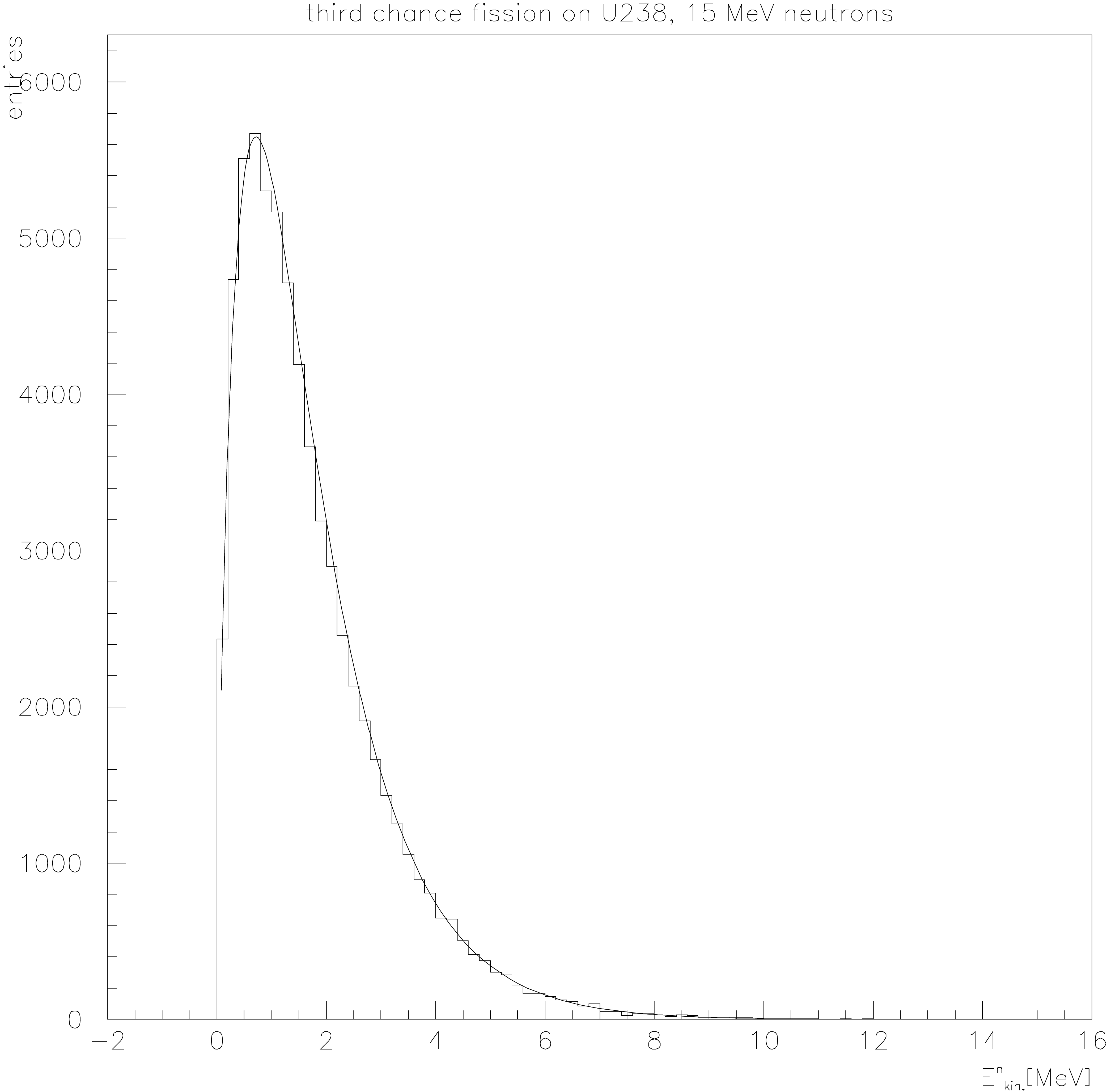Fission
For neutron induced fission, we take first chance, second chance, third chance and fourth chance fission into account.
Neutron yields are tabulated as a function of both the incoming and outgoing neutron energy. The neutron angular distributions are either tabulated, or represented in terms of an expansion in legendre polynomials, similar to the angular distributions for neutron elastic scattering. In case no data are available on the angular distribution, isotropic emission in the centre of mass system of the collision is assumed.
There are six different possibilities implemented to represent the neutron energy distributions. The energy distribution of the fission neutrons \(f(E\rightarrow E')\) can be tabulated as a normalised function of the incoming and outgoing neutron energy, again using the ENDF/B-VI interpolation schemes to minimise data volume and maximise precision.
The energy distribution can also be represented as a general evaporation spectrum,
Here \(E\) is the energy of the incoming neutron, \(E'\) is the energy of a fission neutron, and \(\Theta(E)\) is effective temperature used to characterise the secondary neutron energy distribution. Both the effective temperature and the functional behaviour of the energy distribution are taken from tabulations.
Alternatively energy distribution can be represented as a Maxwell spectrum,
or an evaporation spectrum
In both these cases, the temperature is tabulated as a function of the incoming neutron energy.
The last two options are the energy dependent Watt spectrum, and the Madland Nix spectrum. For the energy dependent Watt spectrum, the energy distribution is represented as
Here both the parameters a and b are used from tabulation as function of the incoming neutron energy. In the case of the Madland Nix spectrum, the energy distribution is described as
Here
Here \(K_l\) is the kinetic energy of light fragments and \(K_h\) the kinetic energy of heavy fragments, \(E_1(x)\) is the exponential integral, and \(\gamma(x)\) is the incomplete gamma function. The mean kinetic energies for light and heavy fragments are assumed to be energy independent. The temperature \(\Theta\) is tabulated as a function of the kinetic energy of the incoming neutron.
Fission photons are describes in analogy to capture photons, where evaluated data are available. The measured nuclear excitation levels and transition probabilities are used otherwise, if available.
As an example of the results is shown in Fig. 119 the energy distribution of the fission neutrons in third chance fission of 15 MeV neutrons on uranium (238U). This distribution contains two evaporation spectra and one Watt spectrum. Similar comparisons for neutron yields, energy and angular distributions, and well as fission photon yields, energy and angular distributions have been performed for 238U, 235U, 234U, and 241Am for a set of incoming neutron energies. In all cases the agreement between evaluated data and Monte Carlo is very good.

Fig. 119 Comparison of data and Monte Carlo for fission neutron energy distributions for induced fission by 15 MeV neutrons on uranium (238U). The curve represents evaluated data and the histogram is the Monte Carlo prediction.